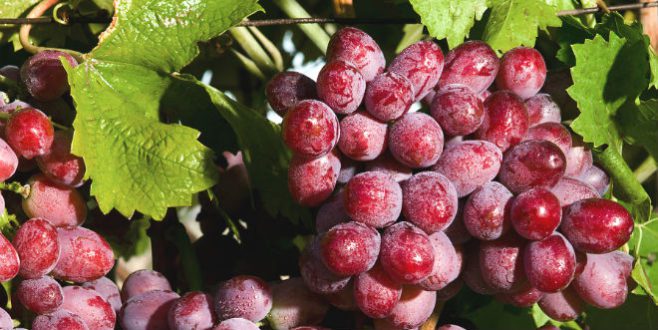Mar 27, 2017How leaf removal kills a common grape pest
Once upon a time, a grape farmer experimented with removing leaves surrounding bunches of grapes and found that the additional sunlight they received improved fruit quality and reduced the incidence of mold.
This “bunch-zone leaf removal” technique became a common practice, and observant grape growers noticed that it seemed to have a secondary benefit: reducing populations of another grape connoisseur, the European grapevine moth (Lobesia botrana.) L. botrana is one of the world’s most destructive grape pests, causing significant economic damage in vineyards in its native Europe and where it has been introduced in North and South America. Caterpillars or larvae of this moth feed on grapes and can spread disease, in particular the grey mold Botrytis cinerea.
While L. botrana is typically controlled using pesticides or mating disruption, “bunch-zone leaf removal” has been shown to reduce infestations by up to 70 percent in some cases. This is impressive, but until recently no one was exactly sure how bunch-zone leaf removal reduced L. botrana infestations. Do female L. botrana moths simply avoid laying their eggs on grape bunches that receive more sunlight? Does the increased sun exposure following leaf removal somehow kill L. botrana eggs or larvae?


Researchers at the University of Udine in Italy set out to determine exactly how bunch-zone leaf removal reduces L. botrana infestations. Their work is published online last week in Environmental Entomology. If bunch-zone leaf removal works, why does it matter how it works? Understanding the “how,” or the mechanism may allow grape growers to adjust the timing or other aspects of bunch-zone leaf removal to make the technique even more efficient at controlling L. botrana.
The researchers hypothesized that removing leaves alters the temperature and humidity around the grapes, killing the L. botrana eggs and larvae on them. Previous research by this group has shown that female L. botrana does not avoid laying eggs on grapes exposed by bunch-zone leaf removal. Insect development is greatly affected by temperature, and observations in vineyards showed that grapes exposed to the sun may reach temperatures up to 10 degrees Celsius (18 degrees Farenheit) higher than ambient temperatures.


To determine exactly how hot, and how dry, the microclimate surrounding grapes had to get to kill off L. botrana eggs and larvae, the researchers reared them in climatic chambers that allowed them to control temperature and humidity. They subjected the eggs and larvae to fluctuating temperatures that mimicked the 24-hour cycle of temperatures in the field including periods of high temperatures equivalent to those on sun-exposed grapes. They found that L. botrana eggs became more susceptible to high temperatures as they matured and that newly hatched larvae were even more susceptible than eggs. Eggs were most susceptible when high temperatures coincided with lower relative humidity. Significant mortality of eggs occurred at just 60 percent relative humidity and 40 degrees Celsius. Newly hatched larvae showed significant mortality at just 37 C. While 37 C or 40 C is higher than ambient temperatures typically recorded in vineyards, grapes exposed to direct sunlight following bunch-zone leaf removal do reach these temperatures.
These results will need to be tested in the field, but Dr. Francesco Pavan, corresponding author on the study, says initial field data supports the hypothesis that exposure to sunlight following bunch-zone leaf removal increases mortality of L. botrana eggs and larvae.
Pavan said that, in vineyards where L. botrana infestations are less severe, bunch-zone leaf removal may be sufficient to control the pest. For more severe infestations, pesticide may also be required for control, but leaf removal can make pesticide application more effective.
Understanding how L. botrana responds to alterations of the microclimate around bunches of grapes also provides insight into how this pest will respond to alterations of the climate at the global scale. As the climate warms and high temperature events become more frequent in some parts of its range, L. botrana infestations might be reduced. This may be good news to wine-loving adults and younger raisin enthusiasts. But, Pavan says “it is likely that global warming will shift the distribution of the species to more northern latitudes.”
Source: Entomology Today















